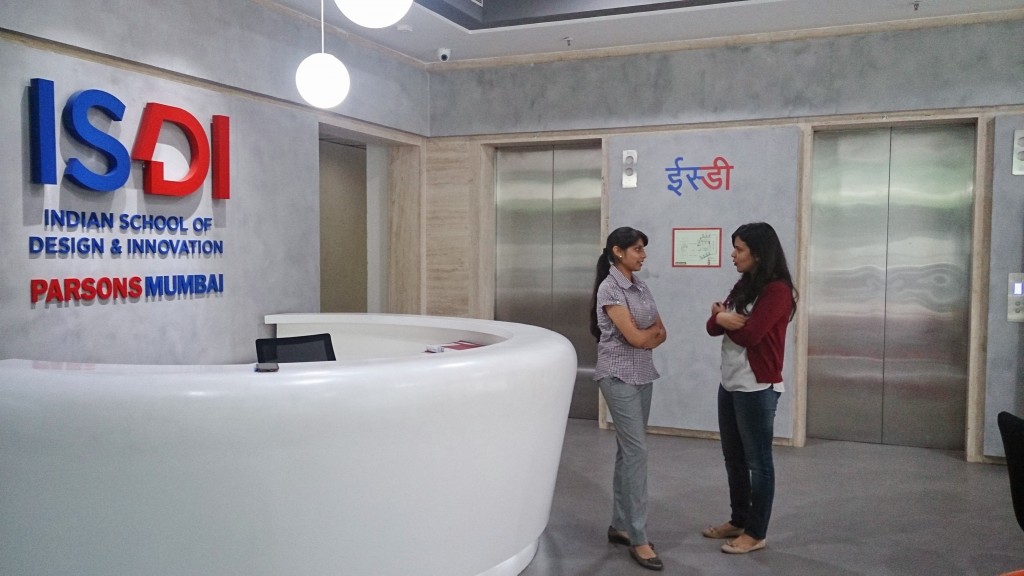Pallavi Patke, a graduate of MA History of Design and Material Culture, reflects on her international study journey to date
I consider myself a curious mix of all spices. Born in Delhi, I was raised in a range of different places in India. Thanks to the constantly shifting nature of my father’s job I was able to witness and adapt to diverse Indian sub-cultures: Bengali, Bihari, Punjabi and Maharashtrian. History, politics and fine arts were the three major subjects in which I excelled in high school. Thereafter, during four years of undergraduate education, I was based in the historic coastal town of Cannanore, a quiet town and a hub for handlooms, located in the north of Kerala. Here I obtained first-hand experience of the rural handicraft industry of South India. Through various textile industry internships and college visits I was exposed to Keralite, Gujarati and Tamil cultures. Although I had had some experience of visiting foreign lands with my family, including Malaysia, Thailand and the US, an academic exchange trip to Switzerland gave me a valuable opportunity to understand the European perspective in fine textile manufacturing. This, together with all my previous cultural encounters, put me in a better position to determine my career path ahead.
Fascinated more by the way traditions and cultural histories shaped the art of designing objects than the commercial aspect of textile production, I took up my postgraduate studies in History of Design and Material Culture at the University of Brighton in 2012-13. Initially, even more than the adjustment to British culture, I had to adapt to a new teaching methodology. For instance, in the beginning I was absolutely clueless about how to interpret readings and then express my ideas coherently while maintaining an objective stand. The tutors, however, had more faith in me than I had in myself at the time. I am particularly thankful to Professor Lou Taylor whose constant support and positive criticism drove me to keep pushing boundaries in research.

Possibly Chinai (Indo-Chinese) Embroidery- Black silk bustle-back dress embroidered in silk, around c.1875-78; Author’s own photograph. 11th December 2012; Source: Lewes Little theatre; With Thanks to Gerry Cortese
At the university I encountered a whole new range of prospects which could be pursued in tandem with my MA. The silhouette research project, co-organised with the Regency Town House, introduced me for the first time to the British history of portraiture and silhouette artists. What was most exciting about this initiative was working with an eclectic group of tutors, undergraduate and postgraduate student researchers and non-academic professionals. In September 2013 the annual conference of the Design History Society provided me with an opportunity to present the subject matter of my thesis before a global audience at the National Institute of Design in Ahmedabad. University of Brighton extended enormous generosity in funding my visit to India for the conference, and given the focus on my dissertation on Anglo-Indian exchange in textile design, this felt like a fitting setting to discuss my work.
By the end of the course I had learnt a huge amount and successfully overcome my earlier fears. Participation in academic seminars and conferences introduced me to international scholars in the field of fashion, art and design history and this inspired me to do something constructive to advance studies in the Indian context. On returning to India it took me a while to reconcile my British experience with the relatively impoverished academic research environment. The first few months of 2014 were especially challenging in identifying India-based connections in the field. While I began assisting with research on the evolution of design in traditional Indian textiles at Chatrapati Shivaji Maharaj Vastu Sangrahalaya or CSMVS (formerly, the Prince of Wales Museum) in Mumbai for a Textile Gallery Project, I found myself grappling with the parochial attitudes of Indian curators in implementing creative learning strategies. Then in August 2014, Poonam Mishra, head of Fashion Business Management at Parsons ISDI (Indian School of Design and Innovation), who shares my aspiration to develop scholarship in fashion and textiles, invited me to develop a proposal for a new study programme. My first step towards introducing pedagogical reform has been to build content for a postgraduate diploma course, Cultural Histories of Fashion and Textiles.
Following all these developments, I now wish to pursue further research in the field of design history. This will help me acquire a much greater depth of understanding in the subject. Thanks to the studies and opportunities offered by Brighton, any research work which I undertake will now certainly reflect a more sensitive handling of subject matter, acknowledging cultural idiosyncrasies while also covering a broad range of perspectives.


